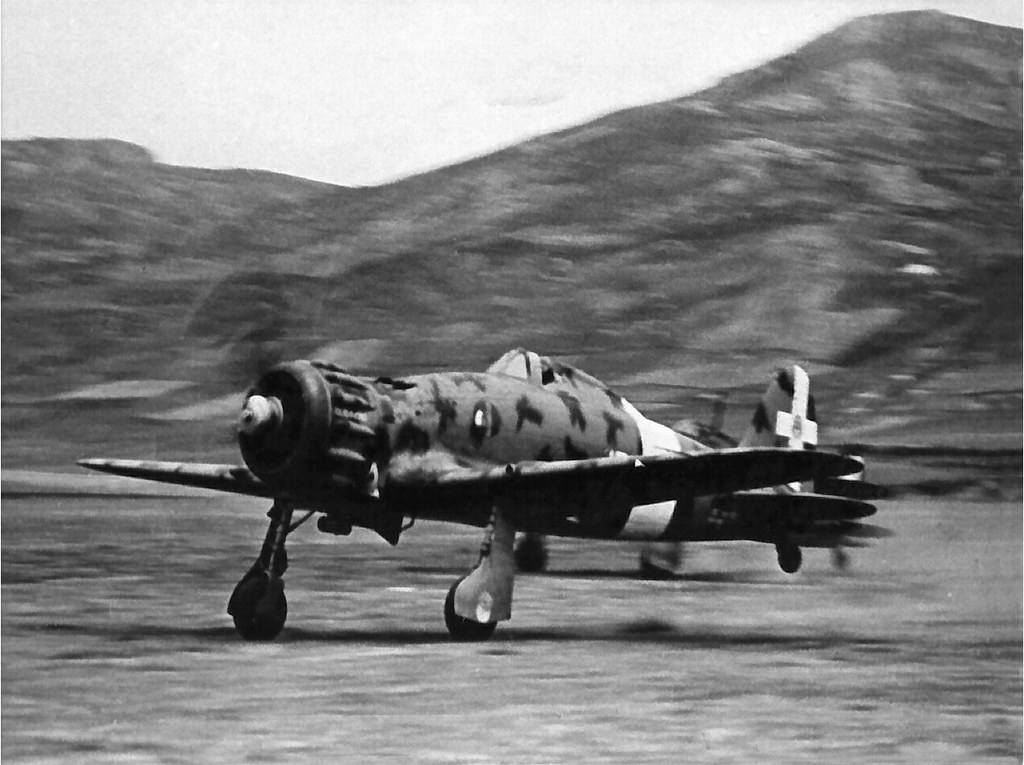#lonate pozzolo
Text
D'altronde come dice Alemanno il 30% degli italiani non è antifascista.
#fdi#lega#fratelli d'italia#fi#forza italia#udc#lonate pozzolo#meloni#salvini#non sono fascisti ma...#marialuisa#panara#elena carraro#lonate#varese
6 notes
·
View notes
Link
Nella serata di ieri l’anziano investito a Lonate Pozzolo è deceduto all’ospedale Sant’Antonio Abate dove era stato trasportato dopo l’incidente. #lonatepozzolo #decedutoanzianoinvestito #carabinieri #ospedalegallarate #codicerosso #settantennelonatese #automedica #fabriziosbardella
#settantenne lonatese#lonate pozzolo#deceduto anziano investito#carabinieri#ospedale gallarate#codice rosso#automedica#fabrizio sbardella
0 notes
Text
Tornavent



Da Milano fino a qua in bici. L’ultimo guizzo sperando in un inverno che sia inverno.
Il 22 giugno 1636, nei dintorni di Tornavento, tra le truppe del re di Spagna (signore del milanese in quanto Duca di Milano), capitanate dal governatore marchese di Leganés, e un esercito francese, alleato dei Piemontesi e comandato dal maresciallo di Créquy, fu combattuta nell'ambito della Guerra dei Trent'Anni una sanguinosa battaglia che lasciò circa 2000 morti nella brughiera.
1 note
·
View note
Text
17 marzo … ricordiamo …
17 marzo … ricordiamo …
#semprevivineiricordi #nomidaricordare #personaggiimportanti #perfettamentechic
2023: Laura Valenzuela, nome d’arte di Rocío Laura Espinosa López-Cepero, attrice e conduttrice televisiva spagnola. Dopo aver lavorato per qualche anno come modella in uno showroom d’abbigliamento, divenne la prima donna in Spagna ad apparire nelle trasmissioni di Televisión Española (TVE). Recitò in molti film dall’inizio degli anni ’50 fino alla fine degli anni ’60. Nel 1971 sposò il regista…

View On WordPress
#17 marzo#Athole Dane Shearer Hawks#Athole Shearer#Bice Valori#Capucine#Clodovil Hernandes#conte di Lonate Pozzolo#Egede-Nissen#Germaine Hélène Irène Lefebvre#Helen Hayes#Helen Hayes Brown#L&039;Wren Scott#Lance Reddick#Lance Solomon Reddick#Laura Valenzuela#Luchino Visconti#Lyle Waggoner#Lyle Wesley Waggoner#Mareike Carrière#Marguerite Nichols#Maria Bice Valori#Mario Marenco#Oksana Oleksandrivna Švec&039;#Oksana Švec&039;#Peter Bowles#Ricordiamo#Rocío Laura Espinosa López-Cepero
0 notes
Text
THIS DAY IN GAY HISTORY
based on: The White Crane Institute's 'Gay Wisdom', Gay Birthdays, Gay For Today, Famous GLBT, glbt-Gay Encylopedia, Today in Gay History, Wikipedia, and more …

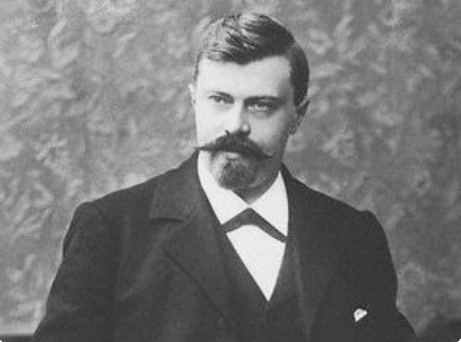
1867 – Wassily Sapellnikoff (d.1941), was a Russian pianist. A more true transliteration of his name is Vasily Lvovich Sapelnikov, however he chose the above version for his appearances in the West.
Sapellnikoff was born in Odessa. He studied at the Odessa Conservatory and became professor of piano at Moscow Conservatory in 1897. He eventually moved to Leipzig and finally settled in Munich.
He toured with Tchaikovsky in Germany, France and England. At his debut in Hamburg in 1888, he played Tchaikovsky's Piano Concerto No. 1 in B flat minor with the composer conducting. This concert was a great success and a catalyst for his budding career as a concert pianist in Western Europe. He was the first to play this concerto in England. He was the dedicatee of a piano piece by Tchaikovsky.
Tchaikovsky wrote about him affectionately in his letters to his brother Modest, in terms such as: Since the time of Kotek I have never loved anyone so warmly as him. Because they spent so much time together on these tours, it is often asserted that he and Tchaikovsky were lovers. However, Alexander Poznansky, in Tchaikovsky: The Quest for the Inner Man, writes:
it seems likely that an erotic element was present in Tchaikovsky's friendship with Sapelnikov and that he recognised it as such. Both men were quite young and good-looking. Almost certainly, however, their relations remained chaste.
Sapellnikoff first appeared in England in 1889 playing the Tchaikovsky concerto at a Royal Philharmonic concert, under the composer's baton. He became a favourite at Philharmonic concerts.


1906 – Luchino Visconti di Modrone, Count of Lonate Pozzolo (d.1976) was an Italian theatre, opera and cinema director, as well as a screenwriter. He is notably known for his films The Leopard (1963) and Death in Venice (1971).
When he was thirty years old, he began his career in film, working as an assistant director and costume designer for French director Jean Renoir, whom he knew socially. As a result of his association with Renoir, Visconti became a leftist in politics. Although he had close connections with Mussolini's son Vittorio, he became active in the anti-fascist movement and, during World War II, in the Resistance.
Also in his early thirties, he had his first serious homosexual affair, with a young German photographer named Horst, who became a well known fashion photographer. The affair lasted three years, but their friendship endured until Visconti's death.
His first feature film, Ossessione (1942), with its insistence on location shooting, proletariat subject matter, and an unvarnished approach to reality, is acknowledged as the first manifestation of Neo-Realism. However, Visconti's film, Bellissima (1951), with a brilliant star performance by Anna Magnani, is a satire of Neo-Realism, as a working-class mother tries to get her little girl cast in a Neo-Realist film.
Early in his career he maintained a scrupulous detachment from the actors and singers whose careers he helped to launch; but by the end of the 1960s, he became passionately involved with several young artists. This aspect of his life came to light when letters that he wrote to several young men, including Helmut Berger, became public in the 1980s.
Visconti made no secret, to those close to him, of his homosexuality. His last partner was the Austrian actor Helmut Berger, who played Martin in Visconti's film The Damned. Berger also appeared in Visconti's Ludwig in 1972 and Conversation Piece in 1974 along with Burt Lancaster. Other lovers included Franco Zeffirelli, who also worked as part of the crew (i.e. production design, assistant director, etc.) in a number of Visconti's films and theatrical productions.
He died in Rome of a stroke at age 69.


1916 – John Burnside, inventor and Gay American activist was born (d: 2008). John was the inventor of the Teleidoscope and the Symmetricon, and was the partner of Mattachine and Radical Faerie founder, Harry Hay for 39 years.
Burnside was sent to an orphanage while still a child because he was caught in sexual play with another little boy. He served briefly in the Navy, and settled in Los Angeles in the 1940s. He married, but had no children.
Burnside met Harry in 1962 at ONE Incorporated. They fell in love and became life partners. They formed a group in the early 1960s called the Circle of Loving Companions that promoted Gay rights and Gay love. In 1966 they were major planners of one of the first Gay parades, a protest against exclusion of Gays in the military, held in Los Angeles. In 1967, they appeared as a couple on the Joe Pyne television show. In the late 1970s, they were instrumental in founding the Radical Faeries.
John died of brain cancer in San Francisco, where he had been tended to by members of the Circle of Loving Companions that had taken care of Harry in his final days.


1943 – Casey Donovan (d.1987) was an American male pornographic actor of the 1970s and 1980s, appearing primarily in adult films and videos catering to gay male audiences.
Following a brief career as a teacher and a stint as a highly-paid male model, Donovan appeared in the film that would cement his status as a gay icon, Boys in the Sand, in 1971. Attempts to build on his notoriety to achieve mainstream crossover success failed, but Donovan continued to be a bankable star in the adult industry for the next 15 years.
Casey Donovan was born John Calvin Culver in East Bloomfield, New York. He graduated from teachers' college in 1965 and after graduation he drifted into being a prostitute and relocated to New York City. He also began pursuing an acting career, appearing in summer stock theatre with the prestigious Peterborough Players.
In 1971, Culver played a supporting role in a low budget sexploitation thriller film, Ginger. This in turn led to an offer to appear in Casey, a gay pornographic film in which Culver played the title role, a gay man who is visited by his fairy godmother Wanda (Culver playing a dual role in drag), and is granted a series of wishes which make him sexually irresistible to other men. Culver later took the character's name, Casey, and that of the popular singer Donovan to create the pseudonym under which he would appear in all his other erotic roles.

Culver first appeared as Casey Donovan in Boys in the Sand, in 1971. The film was an instant success and is considered one of the great classics of male erotic cinema. With the success and celebrity he garnered from the film, Donovan believed that he would be able to cross over into mainstream film. While there were meetings with directors like John Schlesinger and Raymond St. Jacques and talk of casting him in mainstream projects including adaptations of novels by Mary Renault and Patricia Nell Warren, the only film opportunities opened for him were as the star of more erotic films.
Donovan had a successful national tour in the play Tubstrip, written and directed by Jerry Douglas. The play was critically deemed entertaining enough to its target gay audience (having earned, in the words of one critic, a "nationwide gay housekeeping seal of approval").
Donovan's iconic status allowed him to build a lucrative career as a high-priced prostitute although it would cost him his legitimate modeling career as more and more clients made the connection between model Culver and porn star Donovan. He wrote an advice column,"Ask Casey," for the gay-oriented Stallion magazine beginning in 1982.
In 1973 at the height of his popularity, Donovan met actor-turned writer Tom Tryon and the two entered into a long-term relationship the following year. Tryon was deeply closeted and grew increasingly disturbed by Donovan's notoriety. Their relationship ended in 1977.
By 1985, Donovan's health had begun to deteriorate, as he had contracted HIV. Although he had counseled his fans through his "Ask Casey" column as early as 1982 to reduce their number of sex partners and take steps to preserve their health and urged them to be tested for HIV once the test was developed, he himself made little or no effort to change his behavior. Donovan died in 1987 of an AIDS-related pulmonary infection in Inverness, Florida, aged 43.


1944 Patrice Chéreau (d.2013) was a French opera and theatre director, filmmaker, actor and producer. In France he is best known for his work for the theatre, internationally for his films La Reine Margot and Intimacy, and for his staging of the Jahrhundertring, the centenary Ring Cycle at the Bayreuth Festival in 1976. Winner of almost twenty movie awards, including the Cannes Jury Prize and the Golden Berlin Bear, Chéreau served as president of the jury at the 2003 Cannes festival.
From 1966, he was artistic director of the Public-Theatre in the Parisian suburb of Sartrouville, where in his team were stage designer Richard Peduzzi, costume designer Jacques Schmidt and lighting designer André Diot, with whom he collaborated in many later productions. From 1982, he was director of "his own stage" at the Théâtre Nanterre-Amandiers at Nanterre where he staged plays by Jean Racine, Marivaux and Shakespeare as well as works by Jean Genet, Heiner Müller and Bernard-Marie Koltès.
He accepted selected opera productions, such as: the first performance of the three-act version of Alban Berg's Lulu, completed by Friedrich Cerha, at the Paris Opera in 1979; Berg's Wozzeck at the Staatsoper Berlin in 1994; Wagner's Tristan und Isolde at La Scala in 2007; Janáček's From the House of the Dead, shown at several festivals and the Metropolitan Opera; and, as his last staging, Elektra by Richard Strauss, first performed at the Aix-en-Provence Festival in July 2013. He was awarded the Europe Theatre Prize in 2008.
Chéreau was in a long-term relationship with his lover and favorite actor Pascal Greggory. He was not interested in gay topics, saying: "I never wanted to specialise in gay stories, and gay newspapers have criticised me for that. Everywhere love stories are exactly the same. The game of desire, and how you live with desire, are the same."
Chéreau died in Paris on 7 October 2013 from lung cancer. He was 68 years old.


1977 - Today is the birthday of American actor Randy Harrison, Justin of Queer As Folk (US) . Harrison was born in Nashua, New Hampshire, but moved to Alpharetta, Georgia with his family at the age of eleven. He attended Pace Academy, a private prep school in Atlanta. His father is an executive with a large paper company, while he has described his mother as a "thwarted artist."
Randy, who is openly gay, has said: "I love my parents. Coming out to them was sort of coming out to myself. I educated them, and I wanted our relationship to keep growing. I wanted them to be a part of my life still. I wanted to be able to share with them what I was going through."
Harrison attended the University of Cincinnati's College-Conservatory of Music, where he ultimately received his Bachelor of Fine Arts degree in musical theatre. During his time at CCM, he starred in university productions such as Hello Again, Shopping and Fucking, and Children of Eden. He also had other roles in other theatrical venues across the United States at the time.
Randy made his television debut playing Justin Taylor, a gay teen, in 2000's American version of Queer as Folk, based upon the British television series. Known for his optimism and cheery disposition, Justin was a gay teen who sought out a gay community in his hometown of Pittsburg. After losing his virginity to Brian Kinney (played by Gale Harold) during his senior year of high school, Justin falls in love with Brian, and their relationship becomes a central part of the series. "When you watch it, you're like, Wow. I look like that. But it doesn't feel like that at all. It was about communicating with Gale Harold and getting across what I wanted to say about the character," he said. The series ran for five seasons, ending in 2005. In 2007, the character of Justin Taylor was voted number three on the list of top 25 gay television characters of all time by AfterElton.
In 2002, Randy starred in the play Deviant at the New York International Fringe Festival. In the summer of 2004, Harrison made his broadway debut as Boq in the musical Wicked. His Off Broadway credits include A Letter from Ethel Kennedy (2002), Oak Tree (2006), Antony and Cleopatra (2008), Edward II (2007-2008) and The Singing Forest (2009). He also has a substantial resume in regional theatre, most prominently as a featured player since 2005 at the Berkshire Theatre Festival. Roles with the BTF include Equus (2005), Amadeus (2006), One Flew Over the Cuckoo's Nest (2007), Mrs Warren's Profession (2007), Waiting for Godot (2008), Ghosts (2009) and Endgame (2010).
"It makes me proud, and it makes me scared," he said of acting. "More than anything, I want to be an actor and I want to keep working, and I think there's a danger in being perceived as a poster boy for something."
In 2006, Randy co-founded the Arts Bureau (tAB), an umbrella organisation encompassing theatre, film, music and writing. He shot and starred in the first tAB short film, Thinking, in 2008, which has since shown at several film festivals.
Randy dated Advertising Age columnist Simon Dumenco from 2002 to 2008; the two met when Dumenco interviewed Randy for a New York magazine cover story. Now single, he resides in Williamsburg,
Brooklyn with his cats Ella and Aggie.


1983 – Fred Rosser who goes by the ring name of Darren Young is an American professional wrestler, currently signed to WWE . Prior to signing with WWE, Rosser competed in Northeastern and Mid-Atlantic independent promotions including Chaotic Wrestling, East Coast Wrestling Association, Independent Wrestling Federation and the National Wrestling Alliance. He is also the first WWE performer to disclose that he is gay while still active with the company.
Rosser/Young was born in Union, New Jersey. He began watching professional wrestling during the mid-1980s and became interested in becoming a professional wrestler as a teenager, wrestling in several backyard wrestling federations. He attended Fairleigh Dickinson University where he played football for a year, before deciding to focus on his academic studies and professional wrestling.
Rosser became interested in becoming a professional wrestler as a teenager, wrestling in several backyard wrestling federations. He researched a number of wrestling schools before deciding on Camp IWF in West Paterson, New Jersey. This was due in part to his employer, whose uncle was a friend of a local wrestler training there at the time, and helped him enroll in the wrestling school.
In an interview released on August 15, 2013, he publicly discussed being gay, making him the first wrestler ever to come out while still signed to a major promotion. Later that day, WWE released a statement in support of Rosser for being open about his sexuality, and various fellow wrestlers tweeted their support for him. He also revealed that he had a stuttering problem throughout childhood.


9 notes
·
View notes
Text
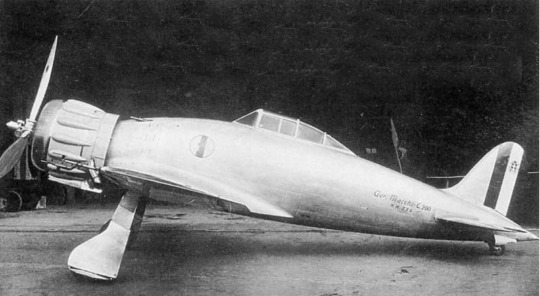


24 December 1937. First flight of the Macchi C.200 Saetta. Italian fighter aircraft (MM.336), at Lonate Pozzolo, Varese, with Macchi chief test pilot Giuseppe Burei at the controls.
@ron_eisele via X
6 notes
·
View notes
Text
Si amplia il Sistema Bibliotecario Busto Arsizio-Valle Olona
“Con le nuove adesioni il Sistema Busto - Valle Olona diventa il più grande della Provincia di Varese"Dal 1° gennaio ai 10 Comuni già appartenenti al Sistema (Busto Arsizio, Gorla Minore, Gorla Maggiore, Castellanza, Olgiate Olona, Fagnano Olona, Cassano Magnago, Somma Lombardo, Marnate, Solbiate Olona, per un totale di 188.689 abitanti), si sono aggiunti Arsago Seprio, Besnate, Cairate, Cardano al Campo, Carnago, Casorate Sempione, Ferno, Gallarate, Lonate Pozzolo, Samarate, Vizzola Ticino, Comuni che facevano parte del Sistema bibliotecario consortile Antonio Panizzi.In totale quindi il sistema di cui Busto Arsizio è capofila comprende 21 comuni (323.393 abitanti). Un anno di tempo per definire insieme l’assetto del nuovo sistema bibliotecario allargato che, probabilmente, avrà anche un nuovo nome. Sito Ufficiale: https://retebibliotecaria.provincia.va.it/


3 notes
·
View notes
Text
Milano. Sequestro propedeutico alla confisca di prevenzione di 96 immobili, 2 autovetture e altri valori mobili per un valore totale di oltre 9 milioni di euro

Milano. Sequestro propedeutico alla confisca di prevenzione di 96 immobili, 2 autovetture e altri valori mobili per un valore totale di oltre 9 milioni di euro.
Nella prime ore del 3 aprile i Carabinieri della Sezione di P.G. della Procura della Repubblica di Milano hanno proceduto al sequestro propedeutico alla confisca di prevenzione di 96 immobili ubicati nei comuni di Legnano, Parabiago, Busto Arsizio, Lonate Pozzolo, Castellaneta, San Giorgio su Legnano, San Giuliano Milanese, Pero, Turate, Oggiono, Cassano Magnago, di due autovetture e di altri valori mobili per un valore complessivo di oltre 9.500.000 euro, in esecuzione al provvedimento emesso dal Tribunale di Milano nei confronti di Ponzoni Maurizio, imprenditore 58enne, con precedenti, al quale, contestualmente ai sequestri, è stato notificato l'avvio del procedimento per l'irrogazione della sorveglianza speciale di P.S. per la durata di 4 anni.
Ponzoni Maurizio, già in passato colpito da analogo provvedimento di prevenzione che aveva sancito una pericolosità sociale la cui intensità era fondata, tra i vari illeciti commessi, anche dall'aver ricoperto un ruolo apicale in un'associazione per delinquere composta da 33 persone e dall'aver intrattenuto rapporti con soggetti condannati per associazione per delinquere di stampo 'ndranghetistico, è gravato da condanne passate in giudicato per associazione per delinquere, bancarotta fraudolenta ed altri reati economici che gli hanno consentito l'accumulazione di un ingente patrimonio immobiliare ora attinto dal sequestro di prevenzione.
Gli accertamenti che la Procura della Repubblica ha svolto, attraverso i Carabinieri della squadra misura di prevenzione, sul conto del Ponzoni e dei suoi congiunti - condotti anche attraverso la revisione sistematica dei passati procedimenti penali che sin dal 2007 hanno visto coinvolto il Ponzoni - hanno infatti permesso di delineare sul conto dello stesso un quadro di pericolosità sociale ancora attuale e di ricostruire il suo ruolo di dominus e amministratore di fatto di un complesso reticolo di società intestate a prestanome, utilizzate per accumulare e schermare l'ingente patrimonio immobiliare, frutto del reinvestimento dei capitali illegittimamente conseguiti, ora colpito dal sequestro emesso dall'Autorità Giudiziaria di Milano.
In concomitanza con i sequestri dei beni di cui sopra la Guardia di Finanza di Milano e Varese ha proceduto al sequestro di oltre 265.000 euro giacenti nei conti correnti intestati ai prestanome e alle società colpite dal provvedimento del Tribunale di Milano....
#notizie #news #breakingnews #cronaca #politica #eventi #sport #moda
Read the full article
0 notes
Text
Tornavento di Lonate Pozzolo (VA).
h.15:25“Tornavento” starebbe comodamente in antichi poemi, Cervantes, R.Dahl.La balconata di Tornavento immaginatela come un trampolino, una rampa. Prendere la rincorsa e decollare su la Valle Ticino ( boscoso Grand Canyon ) poi le Alpi, le mie, anche le tue, le sue (del Boeing 737), le nostre! Lì dogane, nuove e vecchie, il trasporto intermodale e secolare su un fiume che… non è solo un fiume.…

View On WordPress
0 notes
Text
eccellenza lombarda

3 notes
·
View notes
Link
Un trentenne di Lonate Pozzolo è stato ricoverato in codice rosso all’ospedale di Legnano in seguito ad un grave incidente sulla 336. #vigilidelfuoco #codicerosso #incidentesulla336 #lonatepozzolo #poliziastradale #trentenne
#vigili del fuoco#aeroporto malpensa#incidente sulla 336#lonate pozzolo#polizia stradale#trentenne#codicerosso
0 notes
Text

La web reputation di un'azienda o di un individuo è l'immagine che questi proiettano sul web e può avere un impatto significativo sulla loro reputazione online e offline. Ecco alcuni pregi e difetti di una cattiva web reputation:
PREGI: non ci sono pregi in una cattiva web reputation.
DIFETTI: se il sito web dell'azienda o dell'individuo ha una cattiva web reputation, ciò potrebbe comportare una riduzione del traffico web, poiché gli utenti possono evitare di visitarlo.
Perdita di credibilità: una cattiva web reputation può portare a una perdita di credibilità nei confronti dell'azienda o dell'individuo, che potrebbe essere vista come poco affidabile o poco professionale.
Perdita di clienti: se l'azienda è coinvolta in scandali o controversie online, potrebbe perdere clienti e clienti potenziali a causa della cattiva pubblicità.
Impatto sulla ricerca: se l'azienda ha una cattiva web reputation, ciò potrebbe influire sulla posizione dei suoi contenuti nei risultati di ricerca di Google e di altri motori di ricerca, rendendo difficile per gli utenti trovare il sito.
Difficoltà a trovare partner commerciali: una cattiva web reputation può influenzare la capacità dell'azienda di trovare partner commerciali e collaborazioni con altre aziende.
In sintesi, una cattiva web reputation può avere gravi conseguenze sull'immagine e sulla reputazione di un'azienda o di un individuo, con impatti negativi sulla credibilità, la reputazione e la capacità di attrarre clienti e collaboratori.
È quindi importante monitorare costantemente la propria web reputation e adottare strategie efficaci per migliorarla.
Ne parlerò venerdì a Lonate Pozzolo in un incontro aperto a tutti, giovani e meno giovani, semplici cittadini o enti/aziende.
Non dimentichiamo che siamo in un’epoca iper connessa e ignorare certi aspetti si ripercuote inevitabilmente sulla vita reale.
Vi aspetto…
Massimiliano De Cinque #DigitalSherpa
0 notes
Text
17 marzo … ricordiamo …
17 marzo … ricordiamo …
#semprevivineiricordi #nomidaricordare #personaggiimportanti #perfettamentechic
2022: Peter Bowles, attore britannico. Ha guadagnato importanza per fiction televisive come Callan: A Magnum for Schneider. Tuttavia, è ricordato soprattutto per i suoi ruoli in sitcom e fiction televisive. Bowles sposò Susan Bennett nel 1961 e hanno avuto tre figli. Morì all’età di 85 anni, di cancro. (n.1936)
2020: Lyle Waggoner, Lyle Wesley Waggoner, attore statunitense noto principalmente per…
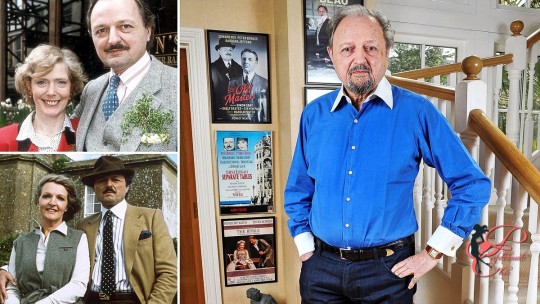
View On WordPress
#17 marzo#Athole Dane Shearer Hawks#Athole Shearer#Bice Valori#Capucine#Clodovil Hernandes#conte di Lonate Pozzolo#Egede-Nissen#Germaine Hélène Irène Lefebvre#Helen Hayes#Helen Hayes Brown#L&039;Wren Scott#Luchino Visconti#Lyle Waggoner#Lyle Wesley Waggoner#Mareike Carrière#Marguerite Nichols#Maria Bice Valori#Mario Marenco#Peter Bowles#Ricordiamo
0 notes
Text

Stamattina, nel diario di bordo – https://bit.ly/UnaCosaSola – ho parlato del corso di italiano di Lonate Pozzolo.
Senza quel corso, avviato ormai ventitré anni fa (c’erano ancora le lire…), probabilmente www.unitalianovero.it non sarebbe mai nato e nella mia vita non ci sarebbe stato nessuno sconvolgimento. Chissà.
Ho parlato della storia del rapporto tra il corso di italiano e UIV in due video dell’ottobre del 2019. La prima parte è qui: https://www.youtube.com/watch?v=L_Nj2d_ezNI
(La pagina del diario di bordo è disponibile anche su YouTube – http://bit.ly/uivYT – per gli abbonati del livello UIV+10 e superiori)
0 notes
Text
Ronnie Bell Following
two Macchi C-200 Saetta of the 8th fighter group taking off from airfield in North Africa
Piotr Hardecki and Miguel Lobo faved this
Stephen 11y
Following the end of Italy's campaigns in East Africa, a program was started to completely reequip the Regia Aeronautica with a new interceptor aircraft of modern design.
The 10 February 1936 specifications called for an aircraft powered by a single radial engine, with a top speed of 500 km/h, climb rate at 6000 meters of 5 minutes, with a flight endurance of two hours, and armed with a single (later increased to two) 12.7 mm machine gun.
Macchi's lead designer was Mario Castoldi, the creator of several racing aircraft which competed for the Schneider Trophy, including the M.39, which won the competition in 1926. He also designed the M.C. 72.
In designing a modern fighter, Castoldi proposed a modern all metal cantilever low wing monoplane, with retractable landing gear, and an enclosed cockpit.
The fuselage was of semi monocoque construction, with self-sealing fuel tanks under the pilot's seat, and in the centre section of the wing.
The distinctive "hump" elevated the cockpit to provide the pilot with an unobstructed view over the engine.
The wing had an advanced system whereby the hydraulically actuated flaps were interconnected with the ailerons, so that when the flaps were lowered the ailerons dropped as well.
Power was provided by the 870 hp Fiat A.74 radial engine, although Castoldi preferred inline engines, and had used them in all of his previous designs.
With "direttiva" (Air Ministry Specific) of 1932, Italian industrial leaders had been instructed to concentrate solely on radial engines for fighters, due to their better reliability.
The A.74 was a re-design of the American Pratt & Whitney R-1830 SC-4 Twin Wasp made by engineers Tranquillo Zerbi and Antonio Fessia and was the only Italian engine that could provide a reliability similar to Allied products.
The licence-built A.74 engine could still be problematic.
In late spring 1941, 4° Stormo's Macchi C.200s then based in Sicily, had all the A.74s produced by the Reggiane factory replaced because they were defective units.
The elite unit had to abort many missions against Malta due to engine problems.
Although the Macchi C.200 was considered underpowered, the air-cooled radial engine provided some cover during strafing missions.
Consequently, the C.200 was often used as a cacciabombardiere (fighter-bomber).
Moreover, it was maneuverable and had a sturdy all-metal construction.
Its armament of two 12.7 mm machine guns was not sufficient, but the Saetta could compete with contemporary Allied fighters.
The first prototype (MM.336) C.200 flew on 24 December 1937, in Lonate Pozzolo Varese, with Macchi Chief Test Pilot Giuseppe Burei at the controls.
It was followed by the second prototype early the next year.
During testing, the aircraft attained 500 mph in a dive, although it could muster only 310 mph in level flight due to a lack of engine power.
Nevertheless, this was better than the performance of the competing Fiat G.50, Reggiane Re.2000, A.U.T. 18, IMAM Ro.51, and Caproni-Vizzola F.5.
In 1938 the C.200 won the tender "Caccia I" (fighter 1st) of the Regia Aeronautica, even if after tests at Guidonia airport, on 11 June 1938, Maggiore Ugo Borgogno had warned that when turning at 90° and the pilot tried to make a tighter turn, the aircraft became extremely difficult to control, tending to turn upside down, mostly to the right and entering into a violent flat spin.
Nevertheless, an initial order for 99 was placed with the Macchi factory.
The G.50 (which in same flight tests at Guidonia airport out-turned the Macchi) was also placed in limited production, because it could be brought into service earlier.
Production started in June 1939.
Like others of the early Italian monoplanes, the C.200 suffered from a dangerous tendency to go in a spin.
Early production C.200 aircraft showed autorotation problems similar to the ones of the Fiat G.50, IMAM Ro.51, and the AUT 18.
At the beginning of 1940 two deadly accidents occurred due to autorotation.
Deliveries and production stopped, and the Regia Aeronautica thought of abandoning use of the type, as the skill involved in flying it was beyond that of the average pilot.
The problem was the new profile of the wing.
Castoldi soon tested another new profile, but a solution to the autorotation problem was found by Sergio Stefanutti, chief designer of SAI Ambrosini in Passignano sul Trasimeno, based on studies by Willy Messerschmitt and the NACA.
He redesigned the wing section according to a variable (instead of constant) profile by just covering parts of the wings with plywood.
The new wing entered production in 1939/1940 at SAI Ambrosini and became a standard on the aircraft manufactured by Aermacchi and Breda, a licenced manufacturer.
After the modified wings of the Saetta were introduced, the C.200 proved to be, for a time, the best Italian fighter.
To save weight, the first production C.200 series did not have armour fitted to protect the pilots.
Armour plating was incorporated when the units were going to replace the Saettas with the new Macchi C.202 Folgore and often in only a limited number of aircraft.
After the armour was fitted, the aircraft could become difficult to balance, and during aerobatic manoeuvres could enter an extremely difficult to control flat spin, forcing the pilot to bail out.
On 22 July 1941, Leonardo Ferrulli, one of the top scoring Regia Aeronautica pilots, encountered the problem and was forced to bail out over Sicily.
At the beginning of 1940, Denmark was set to place an order for 12 C.200s, a deal that fell through when Germany invaded Denmark.
The most serious handicap was the low production rate of the type at over 22000 hours in production time due to antiquated construction technology.
A total of 1153 Saettas were eventually produced, but almost all were gone by the time of the armistice between Italy and the Allied armed forces in September 1943.
In an attempt to improve performance, a C.201 prototype was created with a 1000 hp Fiat A.76 engine, but this was abandoned in favour of the Daimler-Benz DB 601 powered C.202.
The Saetta was to have been replaced outright by the C.202 after only one year in production, but the C.200's service life was extended because Alfa Romeo could not produce enough of the RA.1000 (license-built DB 601) engines, and more C.200s were built using C.202 parts while waiting for production to increase.
In August 1939 about 30 C.200s, by then nicknamed Saetta ("Arrow"), were delivered to 10° Gruppo of 4° Stormo, stationed in North Africa.
Pilots of this elite unit of the Regia Aeronautica Sqd opposed the adoption of the C.200, preferring the more manouvrable Fiat CR.42.
These aircraft were then transferred to 6° Gruppo of 1° Stormo in Sicily, who were enthusiastic supporters of the new fighter, and Gruppo 152° of 54° Stormo in Vergiate. When Italy entered the war on 10 June 1940, 144 C.200s were operational, half of which were serviceable.
Although the first 240 aircraft had fully enclosed cockpits, the subsequent variants were given open cockpits at the request of the Italian pilots.
The first C.200s to make their combat debut were those of the 6° Gruppo Autonomo C.T. led by Tenente Colonnello (Wing Commander) Armando Francois.
This squadron was based at the Sicilian airport of Catania Fontanarossa.
A Saetta from this unit was the first C.200 to be lost in combat when on 23 June 1940,
14 C.200s (eight from 88a Squadriglia, five from 79a Squadriglia and one from 81a Squadriglia) that were escorting 10 SM.79s from 11° Stormo were intercepted by two Gloster Gladiators.
Gladiator N5519, piloted by Flt Lt George Burges, attacked the bombers but was in turn attacked by a C.200 flown by Sergente Maggiore Lamberto Molinelli of 71a Squadriglia over the sea off Sliema.
The Macchi overshot four or five times the more agile Gladiator which eventually shot down the Saetta.
Only on 1 November were the C.200s credited with their first kill.
A Sunderland on a reconnaissance mission was sighted and attacked just outside Augusta by a flight of Saettas on patrol.
With the arrival towards the end of December 1940 of X Fliegerkorps in Sicily, the C.200s were assigned escort duty for I/StG.1 and II/StG.2 Ju 87 bombers attacking Malta, as the Stukas did not have adequate fighter cover until the arrival of 7./JG26's 109s.
On 6 February 1941, the elite unit 4° Stormo received C.200s from 54° Stormo.
With the autorotation problems finally solved, the Macchis were regarded as "very good machines, fast, manoeuvrable and strong" by Italian pilots.
After intense training on 1 April 1941, the 10° Gruppo (4° Stormo) moved to Ronchi dei Legionari airport and started active service.
In combat with the less manoueverable Hurricane it proved effective, with outstanding dogfight performance and no vices.
When it entered service, the Supermarine Spitfire was the only Allied fighter that it faced which could outclimb the Saetta.
C.200s from 4° Stormo took part in operations against Yugoslavia right from the start of hostilities.
At dawn 6 April 1941, four C.200s from 73a Squadriglia flew over Pola fortress and attacked an oil tanker, setting the ship on fire.
The 4° Stormo flew its last mission against Yugoslavia on 14 April: on that day, 20 C.200s from 10° Gruppo flew up to 100 km south of Karlovac without meeting any enemy aircraft.
Operations ended on 17 April.
During those 11 days, the 4° Stormo had not lost a single C.200.
Its pilots destroyed 20 seaplanes and flying boats, damaging 10 more.
In total, they had set on fire an oil tanker, a fuel truck, several other vehicles and destroyed port installations.
Fitted with dust filters and designated C.200AS, Saettas saw extensive use in North Africa.
The Macchi's introduction was not well received by pilots when in 1940, the first C.200 unit, 4° Stormo replaced the type with the C.R.42.
The first combat missions were flown as escorts for Savoia-Marchetti SM.79 bombers attacking Malta in June 1940, where one C.200 was claimed by a Gladiator.
On 11 June 1940, the second day of war for Italy, the C.200s of 79a Squadriglia encountered one of the Sea Gladiators which had been scrambled from Hal Far, Malta.
F/O WJ Wood claimed Tenente Giuseppe Pesola had been shot down, but the Italian pilot came back unscathed to his base.
The Saetta with its sturdy construction, and its agility permitted skilled pilots to effectively fight against more modern designs like the Hawker Hurricane and the Curtiss P-40.
Its greatest weakness was the light armament of two 12.7 mm Breda SAFAT machine guns.
While the Hurricane was faster at sea level (280 mph vs the C.200's 270 mph), the Saetta could reach more than 310 mph at 14 800 ft, although speed dropped off at altitude: 300 mph 19 700 ft and 220 mph at 23000 ft with a maximum ceiling of 29000 ft.
Over 16400 ft and at very low levels, only the huge Vokes (anti-sand) air filter fitted to the "tropical" variants slowed the Hurricane Mk II to the Macchi's levels.
Although the Macchi C.200 was more agile than the Hurricane, it was lightly armed, its windshield and pilot's seat were not normally armoured nor was a radio fitted as standard, while its flight characteristics, even if better than the G.50, were not easily mastered by the average Italian pilot.
On 8 December 1941, Macchi MC.200s of the 153° Gruppo engaged Hurricanes from 94 RAF Squadron.
A violent dogfight developed with the commanding officer, Squadron Leader Linnard attempting to intercept a Macchi attacking a Hurricane.
Both aircraft were making steep turns and losing height, but Linnard was too late and the Macchi, turning inside the Hurricane, had already hit the cockpit area.
The stricken aircraft turned over at low level and dived into the ground, bursting into flames.
Its pilot, the New Zealand born RAF "ace" (six enemy aircraft destroyed and many more probably destroyed) Flight Lieutenant Owen Vincent Tracey was killed.
In same areas, C.200s operated as fighter-bombers against land and naval objectives, and sank the British destroyers HMS Zulu, and HMS Sikh near Tobruk in September 1942.
The C.200 subsequently saw action over Greece, Yugoslavia and the Balkans, and was frequently engaged in dogfights with Hurricanes and Gladiators over the Balkans.
In August 1941, the Italian air force command sent one air corps, formed out of the 22º Gruppo Autonomo Caccia Terrestre with four squadrons and 51 C.200s to the Eastern Front with the Italian Expeditionary Corps in Russia.
Together with C.202s, they went onto claim victory to loss ratio of 88/15.
The first Macchis arrived in Tudora near Odessa on 13 August 1941, commanded by Maggiore Giovanni Borzoni and deployed in 359a, 362a, 369a and 371a Flights (Squadriglias).
C.200s carried out their first operations from Krivoi Rog on 27 August 1941, achieving eight aerial victories over Soviet bombers and fighters.
For a short time the 22° Gruppo was subordinated to the Luftwaffe's V.Fliegerkorps.
Subsequently, they took part in the September offensive on the Dnjepr and as the offensive went on, they operated sporadically from airstrips in Zaporozhye, Stalino, Borvenkovo, Voroshilovgrad, Makiivka, Oblivskaja, Millerovo and their easternmost location, Kantemirovka, moving to Zaporozhye late in October 1941.
In December 371a Squadriglia was transferred to Stalino but replaced two days later by 359a with 11 C.200s.
On 25 December, the C.200s flew low level attacks against Soviet troops that had beleaguered the Black Shirt Legion Tagliamento, at Novo Orlowka.
On 28 December, pilots of 359a claimed nive Soviet aircraft, including six I-16 fighters, in the Timofeyevka and Polskaya area, without loss.
During February 1942, the C.200 was employed in attacking Russian airfields at Kranyi Liman, Luskotova and Leninski Bomdardir.
On 4 May 1942, the 22º Gruppo Autonomo Caccia Terrestre, which had reached its operational limit, was replaced by the newly formed 21º Gruppo Autonomo Caccia Terrestre, composed of 356ma, 382ma, 361ma and 386ma Squadriglia.
This unit, commanded by Maggiore Ettore Foschini, brought new C.202s and 18 new C.200 fighters.
During the Second Battle of Kharkov (12–30 May) the Italians flew escort for the German bombers and reconnaissance aircraft involved.
In May the aircraft's pilots received praise from the commander of the German 17th Armee, mostly for their daring and effective attacks in the Slavyansk area.
During the German advance in the summer of 1942 the 21° Gruppo Autonomo C.T. transferred to Makeyevka airfield, and then to Voroshilovgrad and Oblivskaya.
Increasingly the aircraft were tasked to escort German aircraft.
On 24 July 1942, the unit was shifted to Tatsinskaya Airfield, with 24 Saettas.
Its main task was to provide escort for Stukas in the Don Bend area, where there were few German fighters available.
Hauptmann Friedrich Lang, Staffelkäpitan of 1./StG 2 reported the Italian escort as
"most disappointing."
The Saettas proved unable to protect the Stukas from Soviet fighters.
On 25 and 26 July 1942, five C.200s were lost in aerial combat.
After only three days of action from Tatsinskaya, one third of the Italian fighters had been shot down.
The following winter the Soviet counteroffensive resulted in a retreat of the Axis forces.
By early December, only 32 Saettas were still operating, along with 11 C.202s.
Losses grew in the face of a more aggressive enemy flying newer aircraft.
The last major action was on 17 January 1943: 25 C.200s strafed enemy troops in the Millerovo area.
The aviation of the ARMIR was withdrawn on 18 January, bringing 30 C.200 and nine C.202 fighters back to Italy and leaving 15 unserviceable aircraft behind.
A total of 66 Italian aircraft had been lost on Eastern Front - against, according to official figures, 88 victories claimed during 17 months of action in that theatre.
The summary of the Italian expeditionary force operations included: 2557 offensive flights (of which 511were bombs drops), 1310 strafing attacks, 1938 escort missions, with the loss of 15 C.200s.
The top scoring unit was 362a Squadriglia commanded by Capitano Germano La Ferla, who claimed 30 Soviet aircraft shot down and 13 more destroyed on the ground.
Twenty-three Saettas were transferred to Allied airfields in southern Italy, and flown for a short time by pilots of the Italian Co-Belligerent Air Force after the Armistice with the Allies.
A small number also flew for the pro-German National Republican Air Force based in northern Italy.
Variants
The Saetta underwent very few modifications during its service life.
Aside from the switch to an open canopy, later aircraft were fitted with an upgraded radio and an armoured seat.
Some late-production Saettas were built with the MC.202 Serie VII wing, thus adding two 7.7 mm Breda SAFAT machine guns to the armament.
The four (including two proposed) C.200 derivatives were:
M.C. 200 (prototypes)
Two prototypes fitted with a 840 hp Fiat a.74 RC 38 radial piston engine.
M.C. 200
Single-seat interceptor fighter/fighterbomber aircraft.
Production version.
M.C.200bis
Breda proposed modification with a Piaggio P.XIX R.C.45 engine producing 1180 hp
at 14800 ft.
Converted from an early production C.200: first flight 11 April 1942 from Milano-Bresso flown by Luigi Acerbi.
The aircraft was then fitted with a larger propeller and a revised engine cowling.
Top speed in trials was 332 mph.
It did not enter production as the C.200 had been replaced by more advanced designs by this time.
M.C.200AS
Adapted version to North African Campaign.
M.C.200CB
Fighter-bomber version with 710 lb of bombs or two external fuel tanks
(fighter escort).
M.C.201
As an answer to a 5 January 1938 request by the Regia Aeronautica for a C.200 replacement, Aermacchi proposed the C.201, with a revised fuselage, an engine
Isotta-Fraschini Astro A.140RC.40
(license variant of the French Gnome-et-Rhone GR.14Krs Mistral Masjor) with 870CV.
But later the choice was for the Fiat A.76 R.C.40 engine with 1000 hp.
Two prototypes were ordered.
The first flew on the 10 August 1940, still with the less powerful engine, the A.74.
Although Macchi estimated a top speed of 340 mph, the prototype was cancelled after Fiat abandoned the troublesome A.76 engine.
Via Flickr
5 notes
·
View notes
Text
50 AÑOS DE LA PELÍCULA QUE UNIÓ A MANN, MAHLER, VISCONTI Y AL CHICO MAS BELLO DEL MUNDO 50 AÑOS DE MUERTE EN VENECIA


THOMAS MANN

GUSTAV MAHLER

LUCHINO VISCONTI
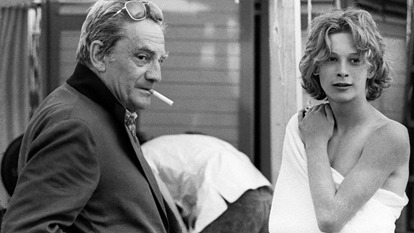





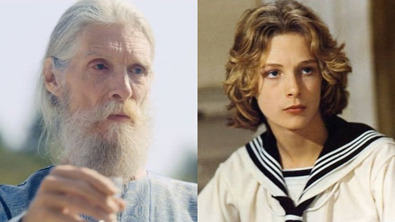
50 AÑOS SEPARAN ESTAS FOTOS
1971 fue un año muy rico en generar películas de gran calidad. A la señalada en el capítulo anterior (Duel) se le pueden unir películas que siguen ocupando un lugar importante en la historia del cine: La naranja mecánica (Stanley Kubrik), Johnny cogió su fusil (Dalton Trumbo), Perros de paja (Sam Peckinpah), El Decamerón (Federico Fellini) o La última película (Peter Bogdanovich). Pero hoy nos vamos a referir a una película que despertó – sigue despertando – filias y fobias, pero que mantiene vigente su gran puesta en escena: Muerte en Venecia, de Luchino Visconti.
Nadie puede dudar de la maestría y del lugar que ocupa en la historia del cine el Conde de Lonate Pozzolo, que así se denominaba el título nobiliario de Luchino Visconti di Modrone (1906-1976). Visconti es uno de los grandes directores del cine italiano de todos los tiempos junto a Fellini, Rossellini, Pasolini, Antonioni, Monicelli y De Sica; su actividad no se limitó al cine pues brilló también con gran éxito en el teatro (escenógrafo y director) y en la ópera (a Visconti se le considera uno de los grandes directores de ópera europeos).
Qué se puede decir, cinematográficamente hablando, de un autor que entre 1943 y 1976 realizó películas como Obsesión, La terra trema, Senso, Noches blancas, Rocco y sus hermanos, El gatopardo, El extranjero, La caída de los dioses, Muerte en Venecia, Luis II de Baviera, Confidencias o El inocente. Revisando sus filmes se aprecian los tres registros sobre los que giraba su obra: la ópera, la literatura y el cine de compromiso social neorrealista. A Visconti se le considera por algunos historiadores como el iniciador del neorrealismo italiano (Obsesión, 1943) aunque otros autores se decantan por Roma ciudad abierta (1945) de Rossellini. De lo que no cabe duda es que Luchino Visconti es uno de los grandes maestros del cine europeo de siempre.
La personalidad de Visconti es tan fascinante como contradictoria y compleja: un título nobiliario, una familia de ancestrales raíces aristocráticas, comunista militante especialmente en su cine, intelectual profundo con una extensa carrera en el cine, el teatro y la ópera. Para rematar la faena Visconti era gay y no lo ocultaba lo que en aquellos tiempos no dejaba de ser una osadía especialmente en la clase social a la que pertenecía.
El objetivo de este capítulo es reseñar el cincuenta aniversario del estreno de Muerte en Venecia, pero no solo eso, sino que, como corolario de la película, vamos a hablar de dos trabajos surgidos a raíz de la película, uno de ellos muy reciente.
Sobre Muerte en Venecia se han escrito cientos de artículos, ha despertado tantas filias como fobias y no seré yo quien añada comentarios más o menos intelectualoides sobre ella.
La novela de Thomas Mann pude ser considerada como autobiográfica como el mismo autor señaló (Mann era bisexual). La novela presenta una serie de disquisiciones filosóficas sobre la belleza y la perdida de la juventud con la que Mann trata de enmascarar el amor que despierta en el escritor Von Aschenbach el joven Tadzio, con un cierto recuerdo a las relaciones en la Grecia clásica entre el erastés (hombre mayor) y el erómeno (adolescente).
Por su parte Visconti hace una interpretación libre de la novela de Thomas Mann. Cambia al personaje principal transformándolo de escritor en músico y cambia esencialmente el final de la obra literaria. El director italiano hace confluir tres personajes: el autor de la novela (Mann), el personaje central de la misma, el músico Von Aschenbach (Mahler) y él mismo. Posiblemente el personaje que menos participe de la profundidad de la película sea el músico. La película sirve de homenaje a Gustav Mahler del que se muestran algunas facetas desgraciadas de su vida privada (desde luego nada que ver con el tema de fondo de la película) y se presenta su música con tal acierto que hoy día es imposible escuchar la 5ª Sinfonía de Mahler sin recordar las imágenes de la ciudad del Adriático del film de Visconti.
Varias cosas son ciertas y continúan presentes en la película: una gran y barroca puesta en escena con la presencia de la ciudad en numerosos planos (recordemos que la primera película en color de Visconti, Senso, también la sitúa en Venecia); unos personajes que proporcionan a las imágenes una especie de maniqueísmo visual (Visconti presenta el lujo y la miseria de la ciudad en varias secuencias); la presencia de una música que la película la hizo conocer a muchos cinéfilos con modestos conocimientos musicales, como es mi caso, y una gran actuación de Dick Bogarde.
Dejemos la forma y vayamos al fondo: ¿exaltación de la belleza de la juventud frente a la decrepitud y fealdad de la vejez o pura y simple pedofilia de un atormentado músico? No lo sé y a estas alturas no me planteo más sesudas disquisiciones psicológicas.
Pero, lo que me ha llamado la atención es que se han hecho sendos documentales no sobre la película sino sobre sobre su adolescente protagonista Tadzio (Bjorn Andrésen). El primero dirigido por el propio Visconti y coetáneo con el largometraje con el título A la búsqueda de Tadzio; el segundo presentado hace escasos meses en Sundance: El chico más bello del mundo.
Un año antes de realizar Muerte en Venecia, en 1970, Visconti se lanza a buscar un chico por varias ciudades europeas (Venecia, Múnich, Budapest, Varsovia, Helsinki y Estocolmo) que reuniera las características que la película necesitaba. Muy amigo de la familia Dominguín Bosé les sugiere que su ahijado Miguel (el futuro Miguel Bosé) sea el Tadzio de la película, pero los padres se niegan; emprende entonces un viaje por varios países para hallar al chico más bello del mundo. Poco antes del estreno de la película Visconti presenta un corto documental (29 minutos) con el título A la búsqueda de Tadzio que señala con claridad el contenido del trabajo. El documental es un desfile de adolescentes ante la cámara a los que se les solicita con una absoluta deshonestidad que adopten diferentes posturas y en el caso de joven sueco Björn Andrésen se le lleva a que se desnude hasta quedarse en calzoncillos ante la mirada atónita del chico de 15 años y el susurro del director “bello, muy bello…”. Realmente fue un ejercicio impúdico y que afortunadamente hoy no sería posible realizar con la desfachatez que se muestra en la película. (En los años 20 del siglo pasado tras el éxito de Jackie Coogan en El Chico, de Chaplin y la explotación y el robo a que fue sometido por sus padres, se legisló una ley para la protección de los menores de edad en el cine que se conoció como Ley Coogan. Hoy los menores de edad están perfectamente cuidados para evitar los abusos de todo tipo que profesionales o familiares desaprensivos pudieran cometer).
El documental muestra como Björn Andrésen, impulsado también por una desaprensiva abuela con quien convivía, se transforma en Tadzio y pasa a convertirse de forma fugaz en un actor famoso y en icono gay. Muchos años después , en 2021, Kristina Lindstrom y Kristian Petri realizan un documental que muestra el olvido enormemente cruel a que fue sometido el joven sueco: El chico más bello del mundo, un brutal documento en el que muestran a Björn Andrésen como el juguete roto en que se convirtió tras el inicial triunfo de Muerte en Venecia. Las fotos entre sus 15 y sus 65 años muestran no solo la decadencia física sino el sufrimiento moral de alguien que no se recuperó tras el uso y abuso a que fue sometido tras su selección para el largometraje de Visconti. El chico más bello del mundo es un gran documental informativo, pero también una denuncia de los modos en que en determinada época se usaba a los menores de edad para conseguir el triunfo.
El documental muestra como el joven sueco luchó el resto de su vida contra la imagen del Tadzio; Andrésen cuenta como perdió la infancia, como fue tratado por aquella constelación de homosexuales que formaban el equipo de Muerte en Venecia (aunque en ningún momento parece que existieran abusos sexuales). Andrésen se refiere a Muerte en Venecia como un error que nunca debió ocurrir. Tadzio se convirtió en un lastre para él y nunca pudo quitárselo de encima.
Tras la película Visconti se olvidó de él y nunca le ofreció otro trabajo. Su vida posterior se llenó de dramatismo: alcohol, drogas, escas oportunidades de trabajo y hasta un hijo fallecido repentinamente con solo unos meses de vida. Hoy con 66 años trabaja de forma más o menos regular en cine y televisión, pero de forma patética Andrésen/Tadzio dice que “en realidad soy el chico más viejo del mundo”.
1/9/2021
7 notes
·
View notes
